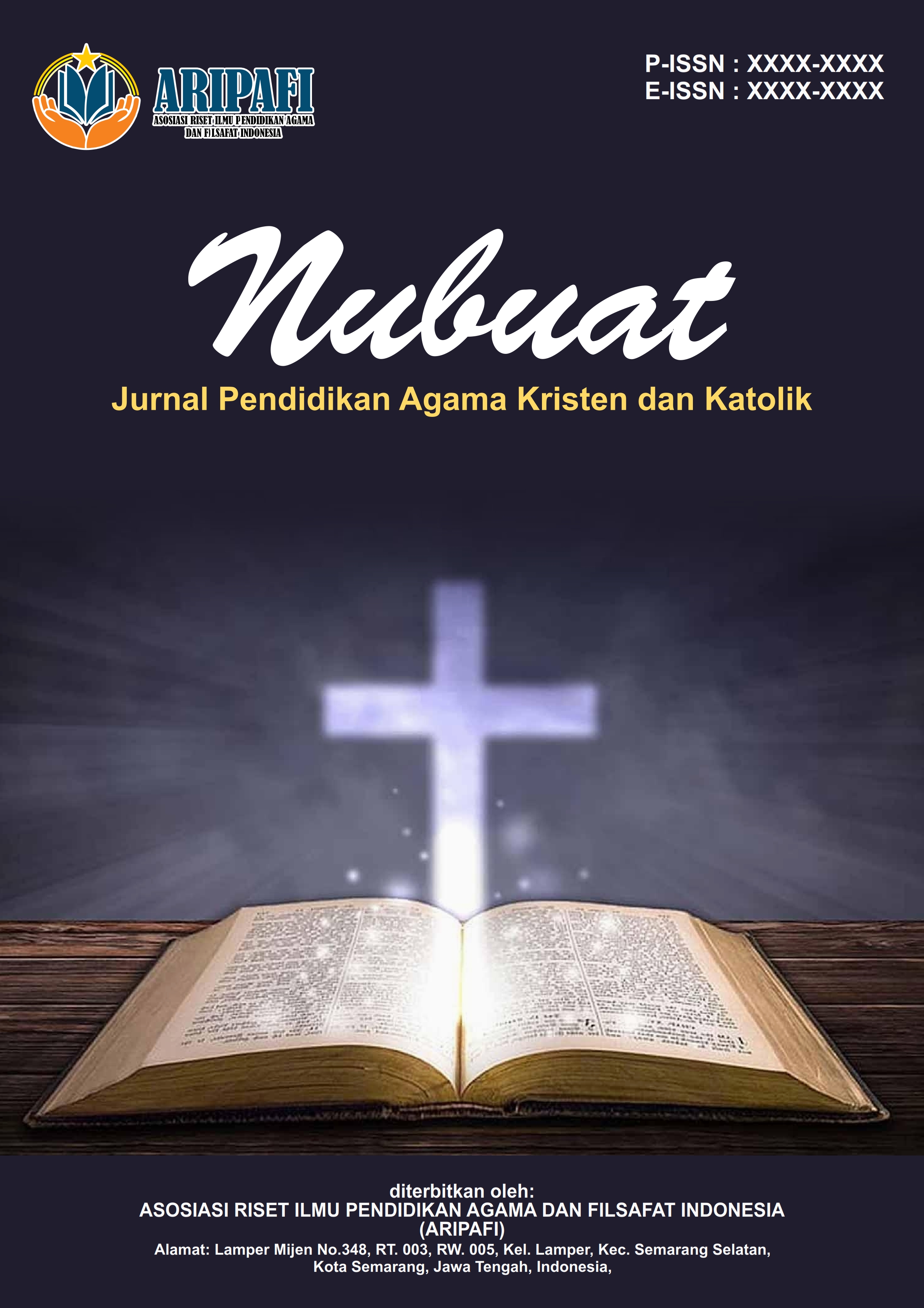Jejak Historis Gereja Nestorian di Nusantara dan Dampaknya pada Ekspansi Kekristenan Kawasan Asia
DOI:
https://doi.org/10.61132/nubuat.v1i4.462Keywords:
Nestorian Church, Asian Christianity, East Syriac tradition, Barus, Christian history, cross-cultural missionAbstract
This article explores the role of the Nestorian Church in spreading Christianity throughout Asia and examines its possible presence in the Indonesian archipelago. Using a qualitative-historical approach and content analysis of primary and secondary sources, this study highlights the Nestorians' contributions in China since the 7th century, particularly in education and healthcare. While their presence in Indonesia remains debated, evidence such as activity in the port of Barus suggests they introduced Christianity through trade networks. However, their influence was curtailed by political shifts, the rise of Islam, and limited socio-political support. This study underscores the significance of the East Syrian tradition in shaping Asian Christian identity and calls for deeper inquiry into Nestorian traces in Southeast Asia. The article enriches the discourse on Asian Christian history by presenting a fresh perspective on cross-cultural faith transmission.
References
Adams, D. J. (1992). Teologi lintas budaya. BPK Gunung Mulia.
Erawadi. (2014). Melacak jejak-jejak peradaban Islam di Barus oleh: Erawadi . Hikmah, VIII(01), 40–52.
Filsafat, S., & Teologi Widya. (2015). Menjadi Gereja Indonesia berbelas kasih. Seri Filsafat Teologi Widaya Sahana, 1–15.
Finamore, P. da S., Kós, R. S., Corrêa, J. C. F., D, ..., Grecco, L. A. C., De Freitas, T. B., Satie, J., et al. (2021). No titleأمين. Journal of Chemical Information and Modeling, 53(February), 2021. https://doi.org/10.1080/09638288.2019.1595750
Hutahaean, W. S., & M, T. S. E. (2021). Sejarah Gereja Indonesia. Ahlimedia Book.
Jaya, A., & Patana, D. (n.d.). Di Desa Parumpanai Dusun Rende-Rende Skisma menurut Kamus Besar Bahasa Indonesia (KBBI) merupakan suatu perpecahan yang berasal dari dalam gereja. 1 J. S. Aritonang dalam bukunya "Berbagai aliran di dalam dan di sekitar gereja" mengatakan bahwa pad.
Purdaryanto, S. (2020). Deskripsi historis doktrin Kristologi. SESAWI: Jurnal Teologi dan Pendidikan Kristen, 2(1), 156–169. https://doi.org/10.53687/sjtpk.v2i1.19
Ruck, A. (2008). Sejarah Gereja Asia (Staf Redaksi BPK Gunung Mulia, Ed.; 8th ed.). BPK Gunung Mulia.
Sembiring, J. (2019). Kawan sekerja Allah memelihara keutuhan NKRI dalam kemajemukan bangsa: Perspektif berdasarkan 1 Korintus 3:9. PROVIDENSI: Jurnal Pendidikan dan Teologi, 1(1), 52–66. https://doi.org/10.51902/providensi.v1i1.52
Situmorang, J. T. H. (2023). Obor Injil di Benua Asia: Sejarah Gereja Asia (1st ed.). Yogyakarta.
Tambunan, E., & Marpaung, L. S. (2023). Sejarah kontestasi Kristologi: Relasi kuasa otoritas dengan kepemilikan Bapa-Bapa Gereja. Fidei: Jurnal Teologi Sistematika dan Praktika, 6(1), 63–87. https://doi.org/10.34081/fidei.v6i1.350
Tukiran, A. (2021). Gereja Nasara Nasathirah di Fansur abad ke-7: Sebuah catatan untuk Pater Y. Bakker, SJ. Media: Jurnal Filsafat dan Teologi, 2(1), 13–24.
Downloads
Published
How to Cite
Issue
Section
License
Copyright (c) 2024 Nubuat : Jurnal Pendidikan Agama Kristen dan Katolik

This work is licensed under a Creative Commons Attribution-ShareAlike 4.0 International License.





